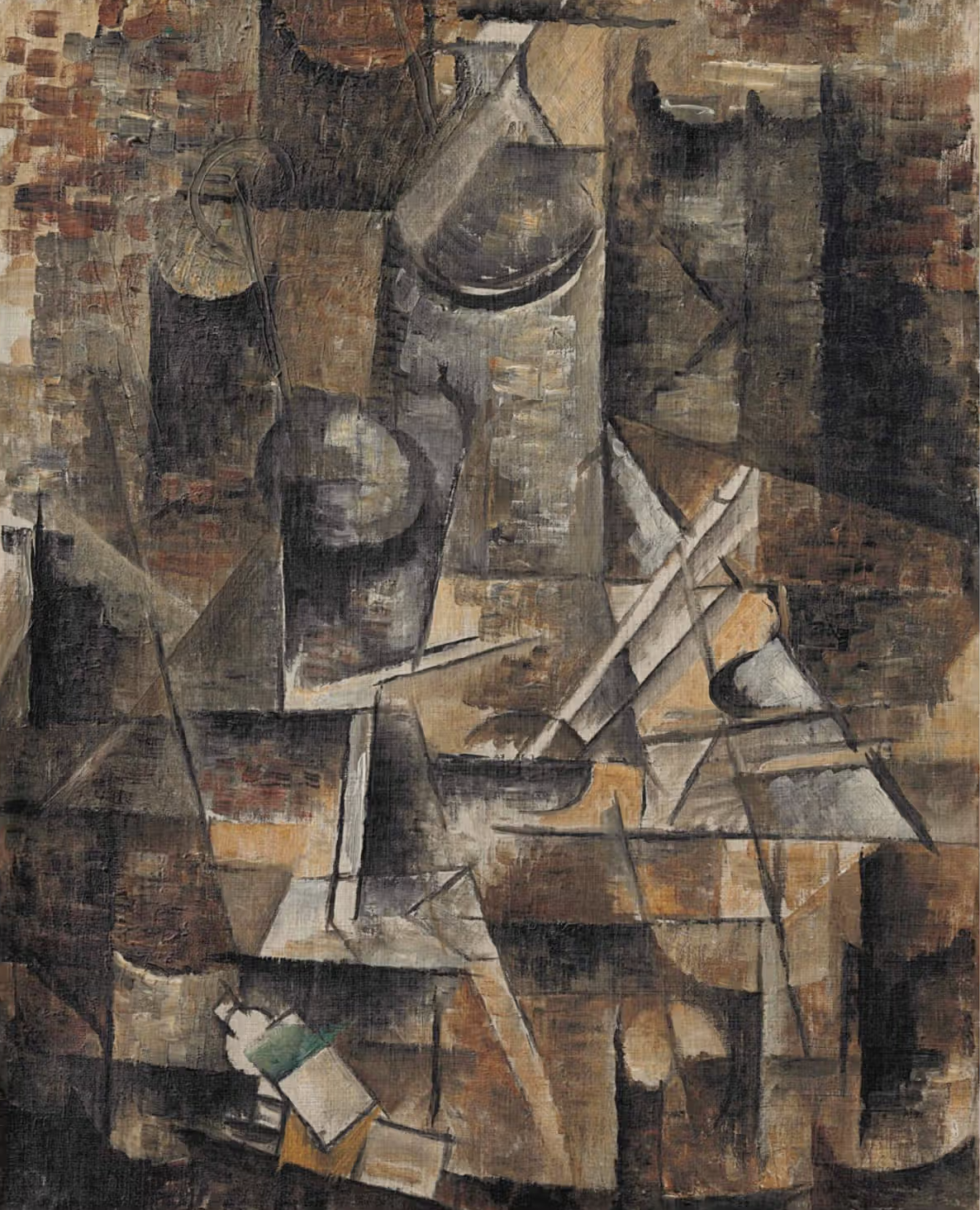Georges Braque
Georges Braque was a French painter and sculptor whose groundbreaking contributions to modern art transformed the way we perceive and engage with reality. As one of the pioneers of Cubism alongside Pablo Picasso, Braque’s work is celebrated for its intellectual rigor, technical innovation, and emotional depth. With his unique ability to fragment space and time, Braque’s paintings challenge viewers to experience the world from multiple perspectives, creating a dynamic, tactile relationship between form and perception.
Georges Braque, Le Modele, 1939
Braque’s most famous works, such as Violin and Candlestick (1910) and Houses at l’Estaque (1908), exemplify his revolutionary approach to representing reality. In these paintings, he deconstructs objects into geometric shapes and reassembles them in ways that invite the viewer to engage with the scene in new, unexpected ways. The result is an intricate, almost musical composition of overlapping planes and shifting perspectives, where the viewer’s eye is constantly moving, seeking to understand the whole from the parts.
What makes Braque’s work so emotionally moving is the way he draws us into a world of visual complexity while maintaining a sense of intimacy and depth. His careful attention to texture, light, and color imbues his paintings with an atmosphere of quiet reflection, encouraging a contemplative interaction with the artwork. Despite the seemingly analytical nature of Cubism, Braque’s ability to evoke a deep emotional response through the interplay of form and space remains a defining aspect of his legacy.
Georges Braque, Le Guéridon, 1911
Braque’s artistic journey was shaped by personal experience and circumstance, including his service in World War I, which profoundly influenced his later work. His quieter, more poetic style emerged in the years following the war, seen in works like The Portuguese (1911) and The Studio (1934), where his once angular, fragmented forms softened into more fluid, organic shapes.
In his later years, Braque settled in the South of France, living in the coastal town of Cannes, where he continued to work until his death in 1963. Even in his final decades, he remained committed to pushing the boundaries of artistic expression, exploring new materials and techniques in both painting and sculpture. Georges Braque’s legacy endures as a visionary artist who reshaped the landscape of modern art, leaving a profound emotional and intellectual impact on generations of viewers and creators alike.
Georges Braque, Mandoline à la partition (Le Banjo), 1941
Georges Braque, Paysage à la Ciotat, 1907



